Contents
- Livestock
- A. Livestock Numbers
- B. Artificial Insemination
- Commonly Reared Livestock
- Changing Practices in Livestock Rearing
- Dairy
- A. Annual Milk Collection
- B. Average Milk Collected Per Day
- C. Dairy Cooperative Societies
- D. Cold Storage Units
- E. Cold Storage Capacity
- Community-Owned Land for Pastures/Grazing
- Pastoralist Communities in the District
- Veterinary Care
- Panjarpol Sanstha
- A. Veterinary Facilities
- B. Type of Veterinary Facilities
- Fisheries
- A. Area for Fisheries
- B. Lakes, Ponds, or Reservoirs Suitable for Fishing
- C. Length of Rivers
- D. Groundwater Fish Production
- E. Fish Seeds Used
- F. Price Received by Producers for Fish Caught
- G. Fish Business Cooperatives
- Sources
KOLHAPUR
Livestock & Fisheries
Last updated on 23 July 2025. Help us improve the information on this page by clicking on suggest edits or writing to us.
Livestock
Commonly Reared Livestock
Livestock farming is vital to Kolhapur’s agricultural economy, with cows, buffaloes, sheep, goats, and poultry forming its backbone.
- Cattle: Common breeds include Jersey, Gir, Khillar, and Holstein Friesian. Gir cows are valued for high milk yield and adaptability, while Jersey cows are prized for efficient milk production.
- Buffaloes: Popular breeds like Pandharpuri, Gavlat, Gaavran, and Murrah are reared mainly for milk. Male buffalo serve as draft animals. Buffalo milk is highly preferred, with brands like Gokul, Sphurti, and Varana highlighting its importance to the local dairy industry.
- Sheep farming: Traditionally practiced by the Dhangar community, sheep are valued for meat, wool, and manure, which acts as an organic fertilizer, enhancing soil fertility.
- Goat farming: Widely practiced for milk and meat, with high demand for goat meat providing a steady income.
- Poultry farming: Both broilers and Gavran breeds are reared. Broilers are raised for meat, while Gavran poultry provides meat and eggs, ensuring local food security and farmer income.
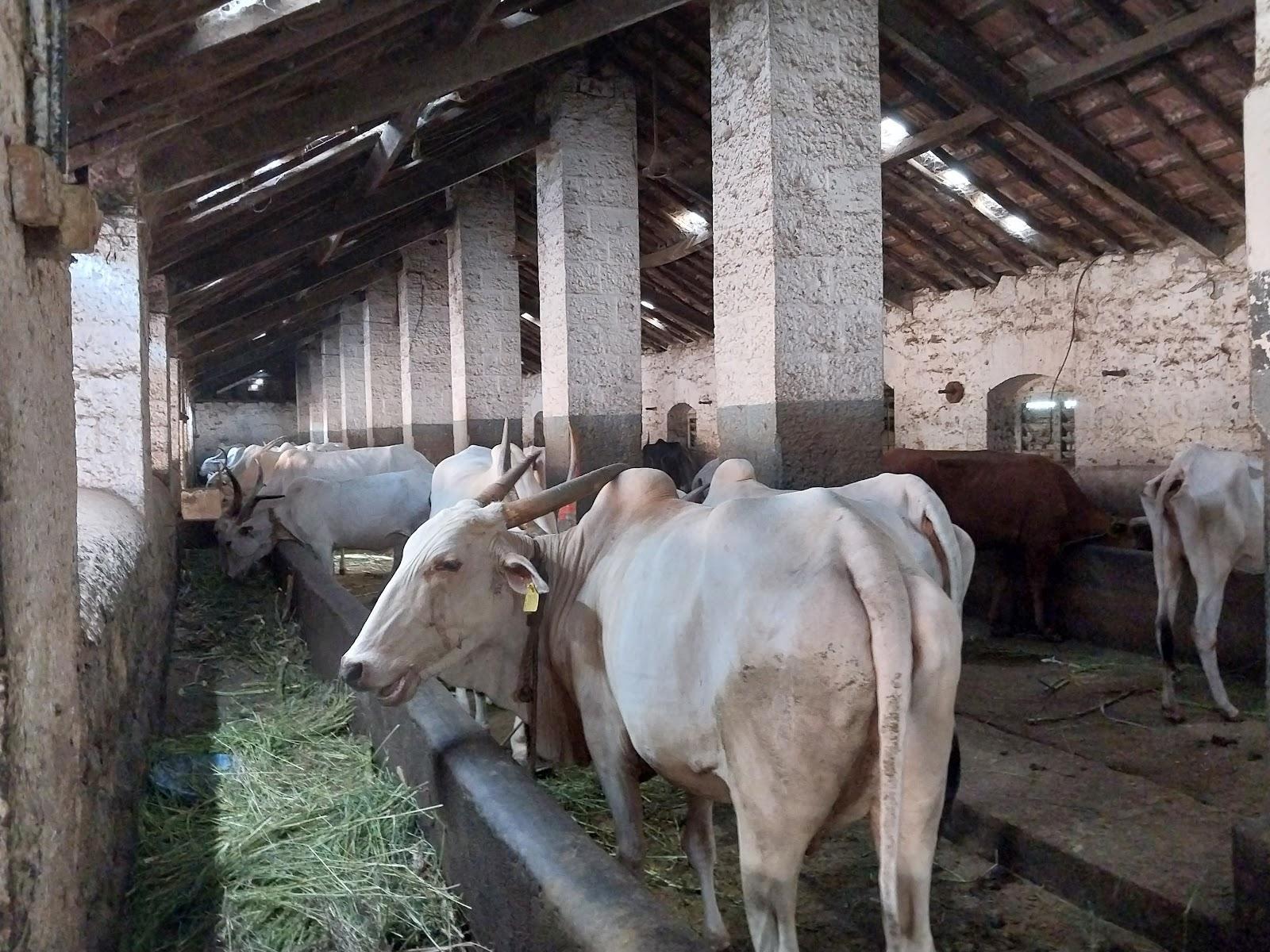
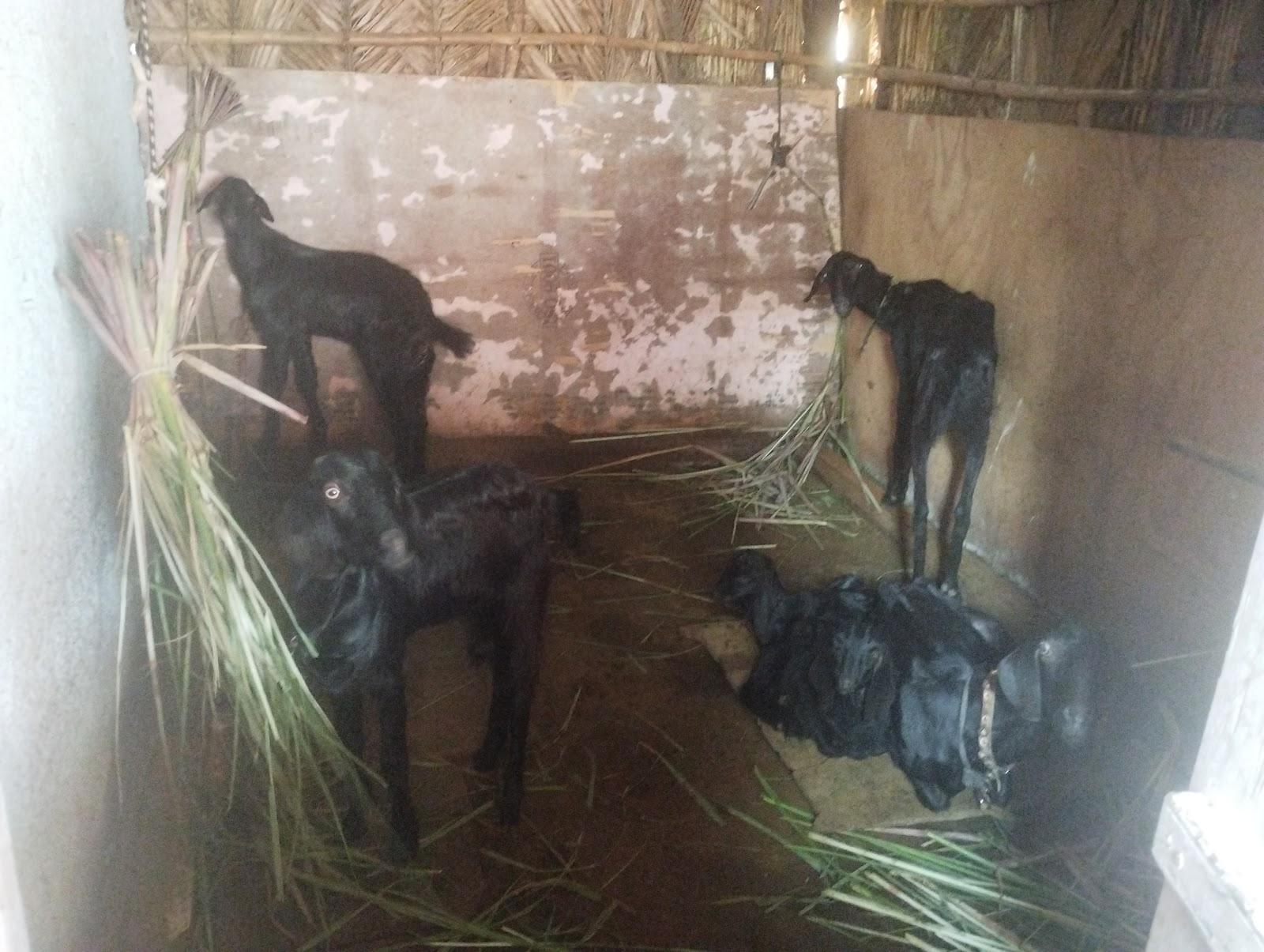
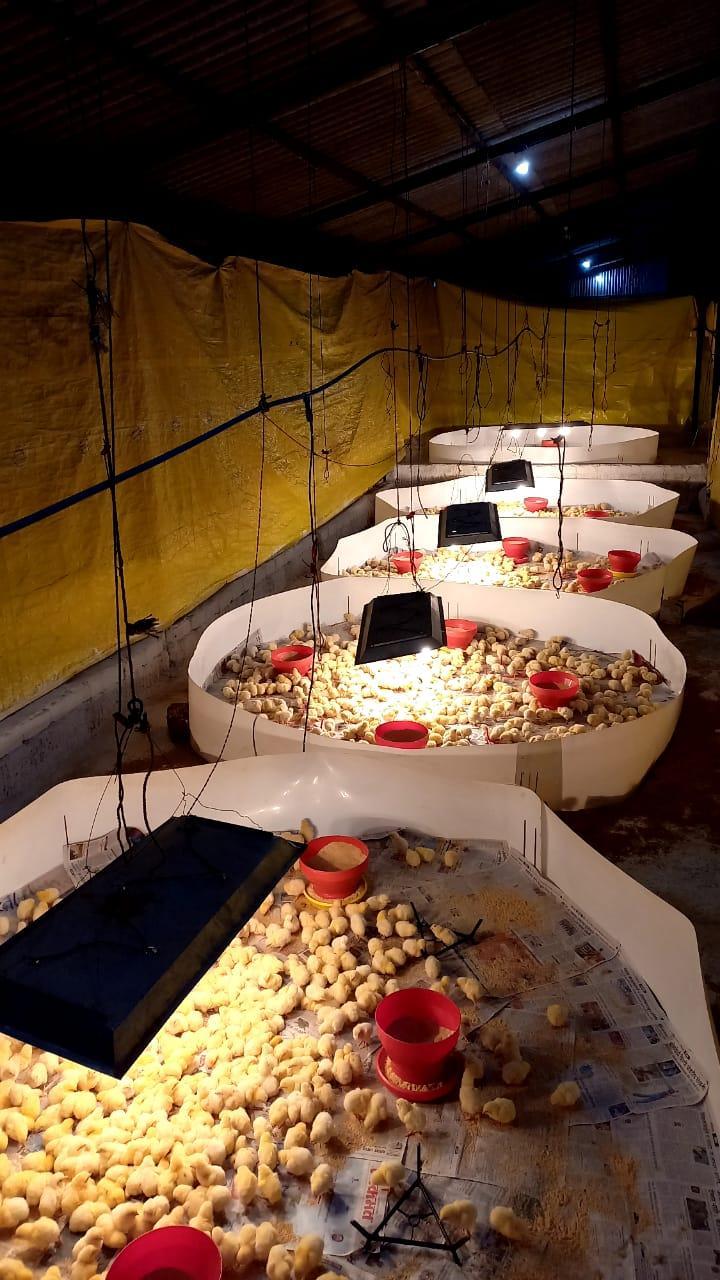
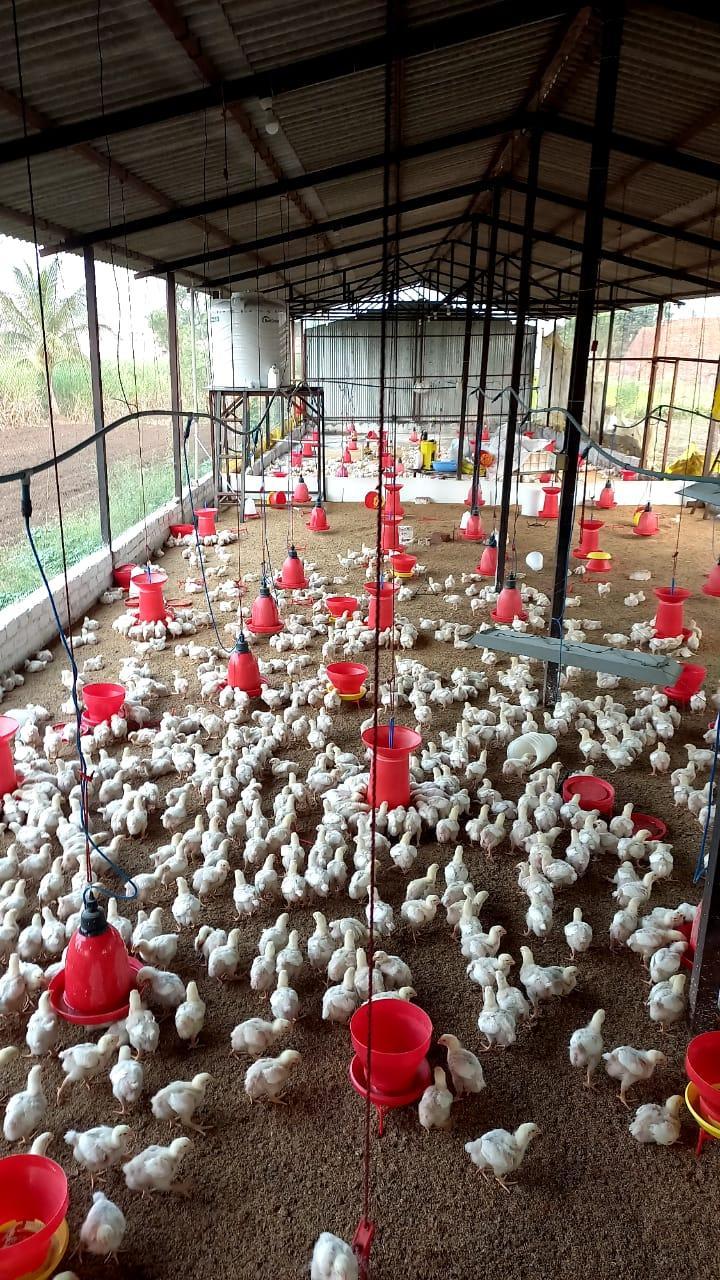
Changing Practices in Livestock Rearing
Poultry farming in Kolhapur district underwent significant advancements in recent years, making the industry more efficient and productive. According to locals, earlier, farmers used the same type of feed for chickens at all stages of growth. However, modern practices introduced specialized feeds tailored to different growth phases. Very young chicks are now given a powdered feed known as "pre-starter," followed by "starter" feed, then "finisher" feed, and finally, a specialized "finished 2" feed for larger breeds. This transition, locals say, has resulted in healthier and stronger poultry.
Watering methods have also improved. Previously, chickens drank from basic drinkers, but now, farmers have adopted advanced watering systems using "nosals." According to farmers, these tools ensure a more efficient water supply, helping chickens stay hydrated and improving their overall health.
Feeding techniques have similarly evolved. In the past, farmers mixed proteins into poultry feed. Now, protein supplements are administered through injections, which, as locals explain, allow for better nutrient absorption and contribute to faster and healthier growth.
Disease management in poultry farming has seen major improvements. Earlier, many chicken diseases lacked vaccines, leading to high mortality rates. Today, vaccines for diseases such as Chronic Respiratory Disease (CRD) and E. coli have become widely available. Farmers state that vaccination programs have significantly reduced illness, ensuring a healthier poultry population.
Additionally, modern poultry farms now use advanced equipment to enhance bird care. Air conditioning (AC) is being used to maintain optimal temperatures, and CCTV cameras have been installed for constant monitoring. According to poultry farmers, these technological advancements help maintain bird health and allow for early detection of any issues.
Goat farming in Kolhapur has also seen technological advancements. Farmers now use artificial insemination to selectively breed goats with desirable traits, such as higher milk yield and better disease resistance, without requiring physical mating. They also employ embryo transfer techniques to increase offspring from high-quality goats. Locals claim that genetic testing has further improved herd selection, allowing farmers to breed goats with superior qualities.
To maintain herd health, farmers have adopted improved biosecurity measures. They control farm access, isolate new animals before integrating them into the herd, and follow strict vaccination schedules to prevent common diseases. Regular health checkups, according to farmers, have played a crucial role in keeping livestock disease-free and productive.
Dairy farming in Kolhapur has also undergone modernization. Traditionally, farmers milked cows and buffaloes by hand, a process that was both time-consuming and labor-intensive. Today, most farmers have switched to milking machines, which, according to locals, make the process faster, more efficient, and less physically demanding.
Changes in cattle feed have further enhanced dairy production. Earlier, cows and buffaloes primarily fed on kadba and gawat. Modern diets now incorporate additional feed types such as bharad and pend, which, as per farmers, have improved the health and milk yield of the animals. Previously, kadba was provided in large, uncut pieces, making it difficult for livestock to consume. The introduction of cutting machines, known as cutta machines, has allowed farmers to process kadba into smaller, more digestible portions.
Livestock shelter maintenance has also improved significantly. Farmers now ensure that cattle sheds are cleaned regularly and well-maintained, creating a healthier environment for the animals. Locals say that these improved conditions have helped reduce disease among livestock.
Traditionally, cows were left to graze freely in open areas such as Malraan. However, modern dairy farms increasingly keep cattle under shaded enclosures with controlled feeding. Farmers claim that this shift has helped regulate the diet of cows and buffaloes while also improving their overall safety and well-being.
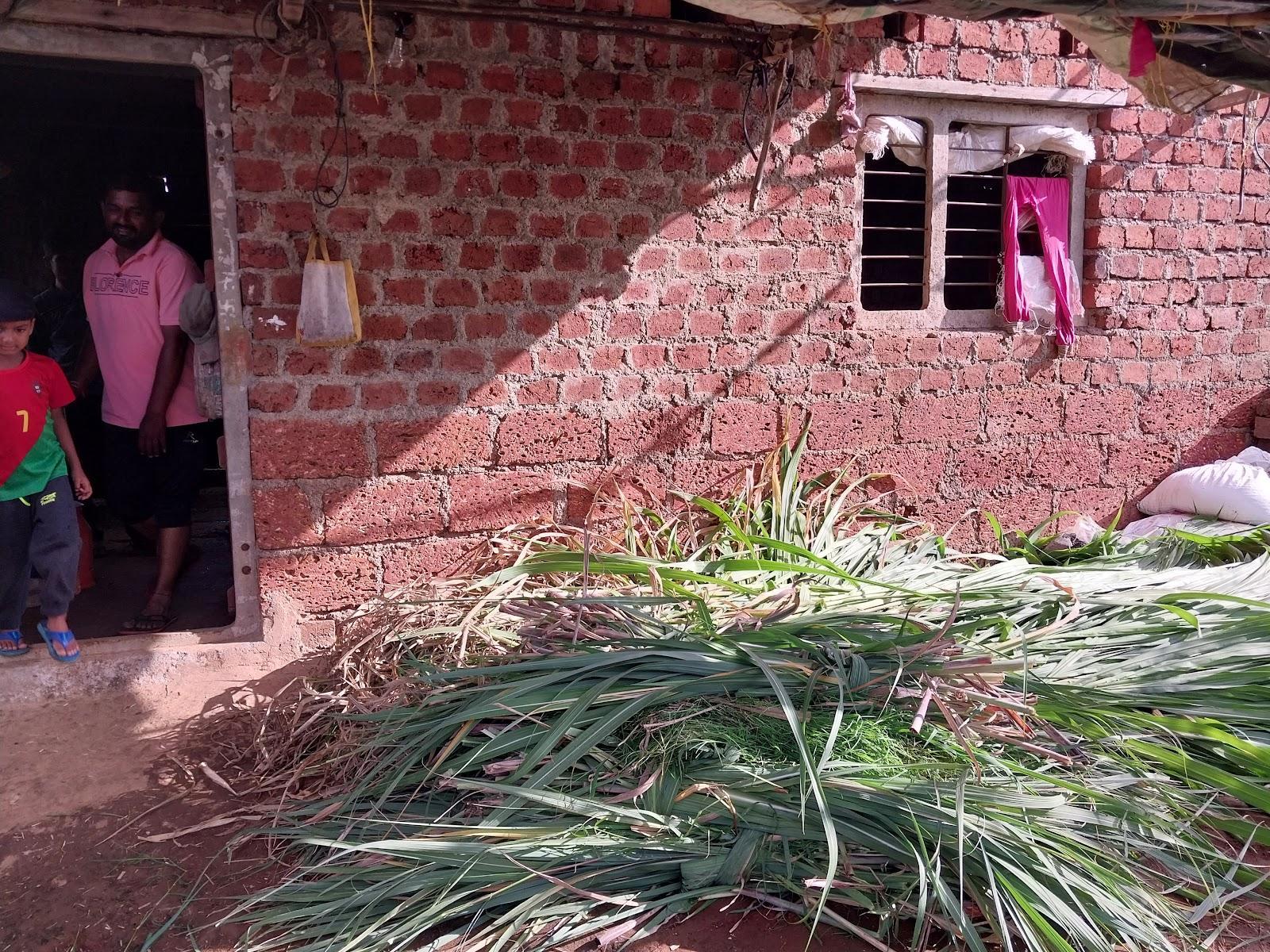

Dairy
The milk industry in Kolhapur is dominated by the Kolhapur Zilla Sahakari Dudh Utpadak Sangh Ltd., known as Gokul, famous for its quality dairy products in Maharashtra. Established in 1963 with just 700 liters of daily collection from 22 village societies, Gokul has expanded into a network of nearly 385,000 producers, sourcing milk from 4,977 cooperative societies across 307 routes.
Modeled on AMUL, Gokul ensures stable markets and fair prices for farmers while providing support like veterinary care, artificial insemination, affordable cattle feed, and training. It runs a modern dairy plant with a 1.7 million liter daily capacity, plus satellite dairies and chilling centers. A packing unit in Navi Mumbai serves urban markets with products such as milk, milk powder, ghee, and butter.
During peak seasons, procurement reaches 911,000 liters daily, with 59% buffalo milk and 41% cow milk. Backed by Operation Flood and the NDDB, Gokul’s commitment to quality, farmer welfare, and modern practices has made it a model for dairy cooperatives in India. [For more information, refer to the Industry chapter.]
Community-Owned Land for Pastures/Grazing
According to locals, areas like Sarnobatwadi, Pattan Kodoli, and Kaneri have special areas of land called "maal raan" that are used for grazing livestock. This land is essential for farmers who keep animals like buffalo, cows, oxen, and goats. These animals are brought to Maal Raan to feed on the grass and other plants that grow there. In Kolhapur city, areas near Rajaram Talav, Shivaji University, Rankala lake, and open grounds are famous and extensively used as grazing areas
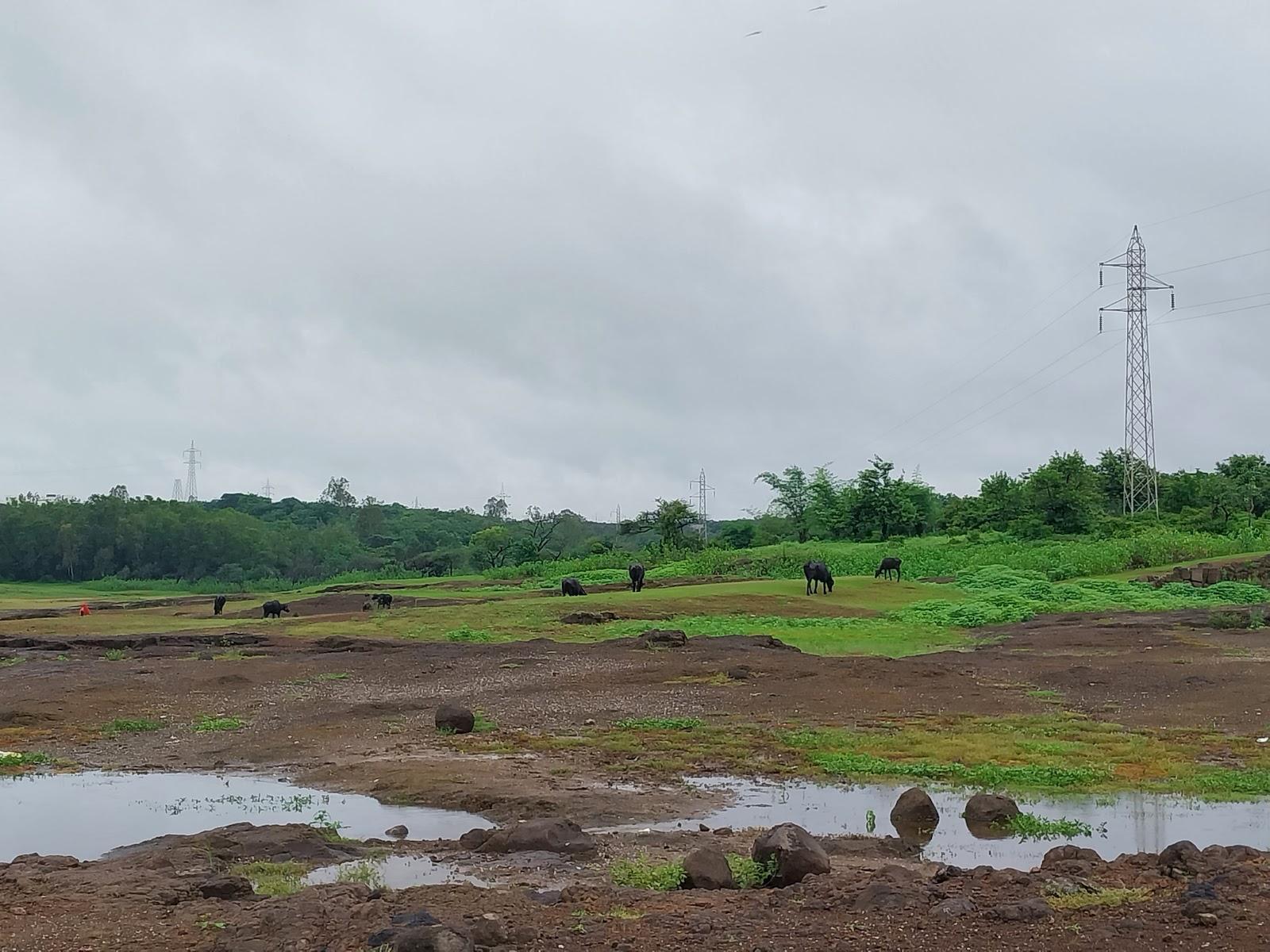
Pastoralist Communities in the District
In Kolhapur district, the Dhangar community is considered an important part of the local culture. Locals say they have a strong connection to both farming and sheep rearing, with their way of life being a unique blend of traditional practices and hard work. According to residents, the Dhangar community is found in significant numbers in the Hatkanangale taluka of Kolhapur district.
Locals mention that each day, members of the community begin by working on their farms. After completing their farm tasks, they take their sheep out to graze, ensuring the animals are well cared for. Sheep farming is said to be a major part of Dhangar life, with many families reportedly owning hundreds of sheep. According to locals, the Dhangars take great care of these animals, treating them with the same love and attention as they would their own family members. This close bond, they say, reflects the deep significance of sheep in their lives.
Veterinary Care
Locals say that until the 2000s, veterinary doctors did not receive the same level of recognition as MBBS doctors, and many people were unaware of their practice or even the location of veterinary hospitals.
Farmers, in particular, traditionally did not take their animals to hospitals. Instead, they preferred calling a doctor to visit their village for treatment. According to locals, many of these practitioners were diploma holders in veterinary sciences rather than degree-qualified doctors. While this practice has existed for a long time, some say it continues even today despite official regulations. On the other hand, government veterinary hospitals have well-qualified doctors who hold proper degrees and provide accurate diagnoses and treatment. Locals mention that awareness about veterinary care has improved over time, and more farmers are now seeking professional treatment for their livestock.
Some of the veterinary services in the district include:
- Government veterinary hospital, Mangalwar Peth, Kolhapur city
- Dr. Anil Patil Dogs Clinic, Ruikar Colony, Kolhapur
- Animal Clinic, Mahalaxminagar
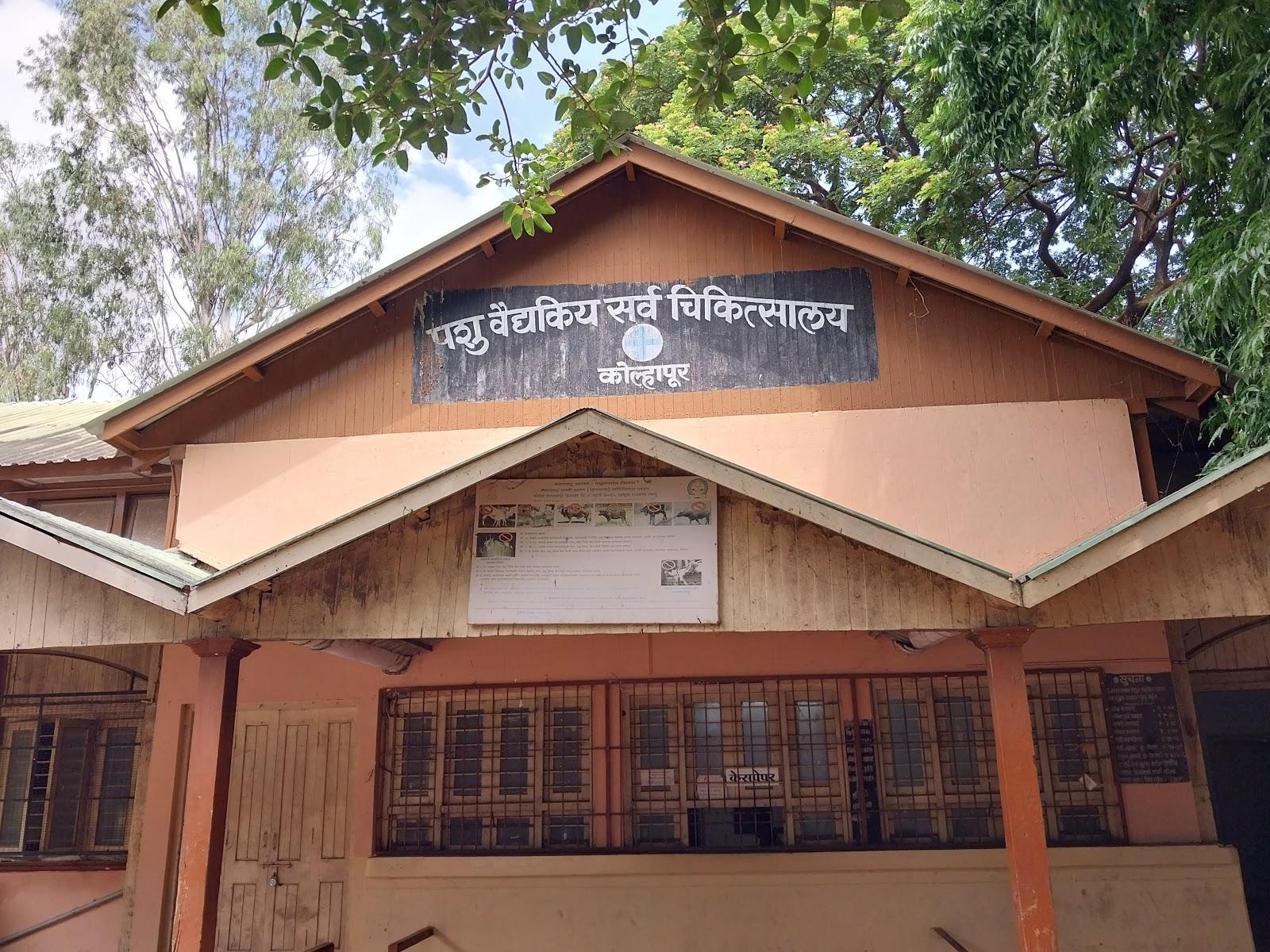
Panjarpol Sanstha
Panjarpol Sanstha, which was founded by Rajarshi Shahu Maharaj in 1906, is now termed as ‘Old Age of Animals’. This Sanstha was then given in the hands of Gul vyapari (Jaggery producers), and only these were appointed as President, Secretary, Treasurer, Member, and Director. The organization has 7 directors.
This system of administration is followed even today. If you want to be a member of the organization, you have to be a Jaggery producer. Panjarpol Sanstha has hired 2 Veterinary doctors, 3 office staff members, 10 women laborers, and 5 men laborers.
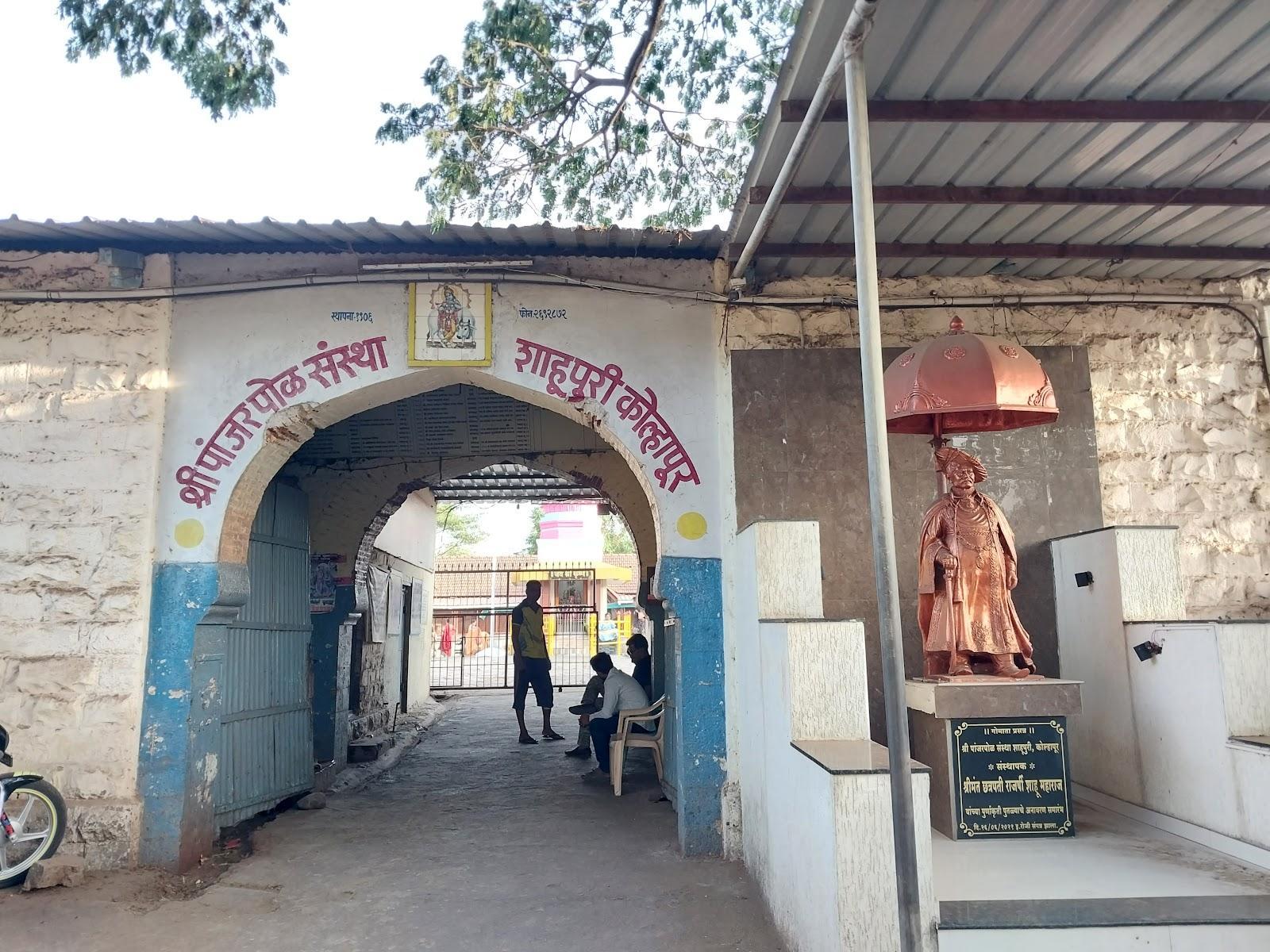
This organization has adopted around 400 animals, which include cows, buffalo, bulls, and even horses, dogs, cats, and birds.
When farmers give up on their old-aged cow/ buffalo/bull, they keep their animals here. While doing so, they have to pay the fees and then register their animal. The animals adopted are properly taken care of. Their food, medical requirements are met efficiently. All the expenses are covered by the donations from the people who visit here regularly.
The distribution of milk is done properly and sold according to the rules. Milking is done only twice a day. The milk from the morning is given to the Jain temples, whereas the evening milk is given to only those who are monthly registered customers by paying an advance fee. These customers are provided with 24 coupons each month, where they can access only a quarter liter.
Of the 400 animals present here, usually 250 of them die due to aging. These cows are buried in the village called Kushire, which comes under Panhala taluka. Chhatrapati Shahu Maharaj bought a 500-acre farm and gave it to the Panjarpol Sanstha. Thus, every year grass grown there in the monsoon is transported to Panjarpol Sanstha, which is then dried and used as fodder for animals.
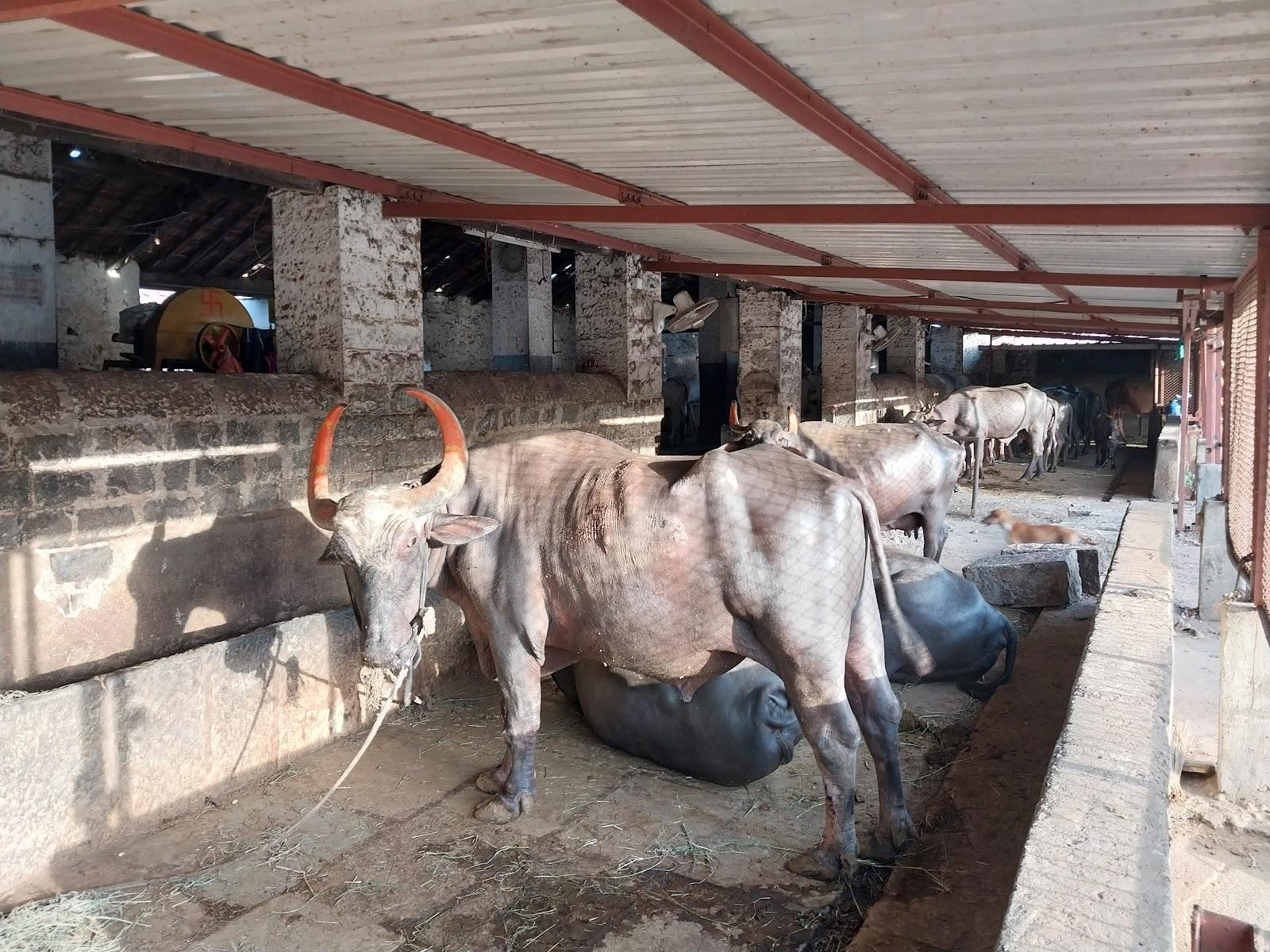
Dr. Raajkumar Baagal, who has been working here for 30 years, finds the environment over here very peaceful and loves working here. Being a veterinary doctor, he has diagnosed thousands of animals and has found that Foot and Mouth disease, diphtheria, and LSD are common in Kolhapur among animals. He had to tackle even violent animals, yet managed to give a precise diagnosis as the profession demands. “It is the behavior, expressions, and the physical symptoms which aid us in knowing the disease”, adds Dr. Bagal. Further, he also wants the government to start a 24-hour facility for the animals because animals are no different than humans, as he says, and most of the animals in the district die due to a lack of available medical facilities during odd hours/on working days.
Fisheries
According to the Kolhapur District Gazetteer of 1960, the physical features of the Kolhapur district exhibited a varied landscape consisting of plains, plateaus, and hill ranges. The Western Ghats, which formed the western boundary of the district, extended several spurs into the eastern region. The high altitudes of these ranges, combined with substantial rainfall, led to the formation of numerous streams and small valleys. The district was drained by six major rivers: Warna, Panchaganga, Dudhaganga, Vedganga, Hiranyakeshi, and Ghataprabha, which provided multiple sites for the construction of dams and weirs. A series of weirs built on the Panchaganga River, formed by the confluence of the Tulsi, Kasari, Bhogawati, Brahmi, and Kumbhi rivers, helped retain water, creating a suitable habitat for various fish species. As the tributaries dried up after the monsoon, fish migrated into the Panchaganga in search of shelter and food. Additionally, the district had several natural lakes, irrigation tanks, and reservoirs, including Radhanagari reservoir, Rankala lake, and Kagal tank, where pisciculture activities were undertaken. The expansion of irrigation schemes was expected to further promote fisheries in the region.
Fishing was carried out in rivers and tanks using different techniques, such as cast nets (Phenkani), fixed nets (Ghal), drag nets (Vadap), drift nets (Kandale), and the hook-and-line method (Gana). Cast nets, locally known as Phekani or Phek-jal, were circular nets with weighted edges that trapped fish when pulled. Fixed nets, or Ghal, were conical in shape and positioned in rivers with strong currents, secured by bamboo poles and wire ropes. Drag nets (Bava), the largest type of nets used, consisted of multiple rectangular sections and were dragged through water bodies by groups of fishermen. Drift nets (Kandals) were employed during summer when water levels receded, while hook-and-line fishing involved attaching multiple hooks to a long fishing line and using floats to keep it suspended.
Unlike coastal regions, Kolhapur did not have concentrated fishing villages. A 1955 survey conducted by the fisheries department recorded 825 houses of fishermen spread across 63 villages, mostly along riverbanks. The total fisher population stood at 5,775, of whom 993 were actively engaged in fishing. However, since fishing did not provide full-time employment, most fishermen worked as agricultural laborers or masons. The fishing community comprised Bhoi, Bagdi, and Koli. Monday was observed as a rest day when no fishing was carried out. Fishermen typically sold their catch in local markets, while fisherwomen and elderly members of the community hawked fish door to door. Although fish curing was not practiced locally, salted fish was imported from Ratnagiri district for consumption.
Sources
Gazetteers Department, Government of Maharashtra. 1960 Kolhapur District Gazetteer.https://gazetteers.maharashtra.gov.in/cultur…
Last updated on 23 July 2025. Help us improve the information on this page by clicking on suggest edits or writing to us.